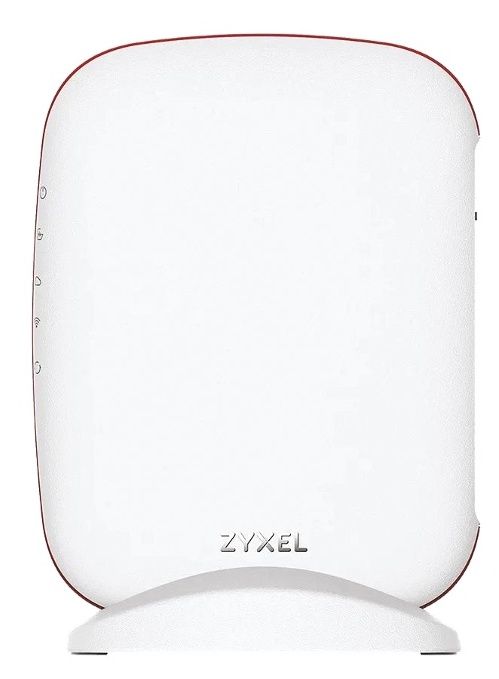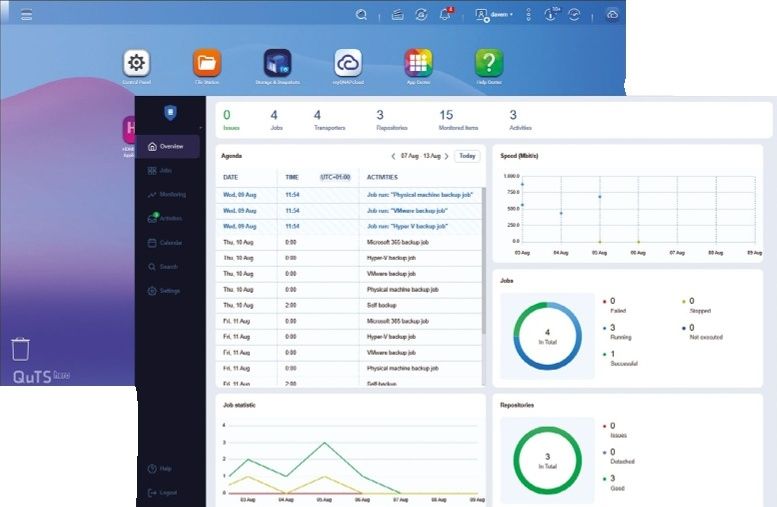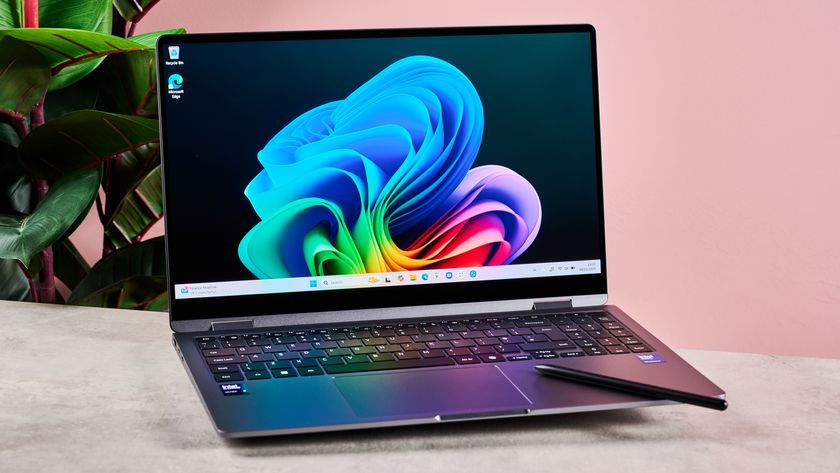TechRadar Verdict
A solid iPhone, but a clear evolution from previous Plus models. Compared to the iPhone X, iPhone XS and iPhone 11 Pro Max it's unexciting, but it offers the traditional home button and a far better experience over the smaller iPhone 8.
Pros
- +
Fast and wireless charging is useful
- +
Glass back feels premium
- +
Dual camera is powerful
Cons
- -
Dated design
- -
No mobile HDR
- -
Battery life average
Why you can trust TechRadar
The iPhone 8 Plus remains a solid option in the iPhone ecosystem despite seeing competition since it launched – and being discontinued by the company. Since this review was originally published, we've added comparisons to some of the alternative phones you might be considering.
The newest contenders into this competition congregation are 2020's iPhone line. That's the iPhone 12, iPhone 12 mini, iPhone 12 Pro and iPhone 12 Pro Max, and they're far more powerful than 2017's iPhone 8 Plus – but with iOS 14, the latter has all the software perks of Apple's latest phones.
While the iPhone 8 Plus has been quietly snuck out of the official Apple lineup in favor of the iPhone SE 2020, the 8 Plus remains an affordable iOS device sold by tons of retailers. So if this review gets you interested in the smartphone, it should be easy to find and easier on the wallet to buy.
The iPhone 8 and iPhone 8 Plus represent the last hurrah for the old iPhone design with a Home button and thick chin bezels, physical features which have been kept on in the newer mid-range iPhone SE 2020.
In terms of what came before this phone though, The iPhone 8 Plus looks like the iPhone 7 Plus, which looks like the 6S Plus, which looks like the 6 Plus...you get the idea. The only thing that tips us off that the 8 Plus is the newest model is the addition of the glass back and the two-tone effect it creates… if it wasn't for that, it would be impossible to tell this and the 7 Plus apart.

Weight: 202g
Dimensions: 158.4 x 78.1 x 7.5mm
OS: iOS 12
Screen size: 5.5-inch
Resolution: 1080 x 1920
CPU: Apple A11 Bionic
RAM: 3GB
Storage: 64/256GB
Battery: 2,691mAh
Rear camera: Dual 12MP
Front camera: 7MP
Apple has never changed things for the sake of it, but the 8 Plus is the company's final nod to the design it relied on for years before the iPhone X arrived in 2017 to move the dial dramatically, plug in reams of new technology, and change the way we think about the iPhone.
We can only interpret that this is now the 'default' iPhone – the one for folks who aren't looking to spend exorbitant sums of money on a handset, or not keen on big changes, when shopping for a new iPhone. And for those who prefer a home butotn and Touch ID instead of Face ID, the iPhone 8 plus remains an option.
There are some strong upgrades from the iPhone 7 Plus too: the camera has been enhanced, the internal workings are still among the most powerful in the industry, and little tweaks throughout smooth off rough edges in a way that makes us feel Sir Jony Ive climbed inside his computer and lathed them off himself.
Add to that a better battery and screen, and the iPhone 8 Plus is the better iPhone compared to the smaller 8.
Update: The iPhone 8 Plus will get iOS 15 when the software rolls out later this year, probably in September. Apple has confirmed as much as well as revealing iOS 15 in full, with features including Android users on FaceTime calls, statuses in the Messages app, a redesigned weather app, and more.
Watch our iPhone 8 Plus video review by clicking the play button above.
iPhone 8 Plus vs iPhone XS
The first difference here is cost – although not to the same level as vs the iPhone 8. The iPhone XS (which has replaced the iPhone X) starts at $999 / £999 / AU$1,579 if you want the 64GB model, where the iPhone 8 Plus now begins at $699 / £699 / AU$1,149 for the same capacity.

So what are you getting for that (slightly) higher cost? Primarily, the screen – you've got a bezel-less 5.8-inch display with a 1,125 x 2,436 resolution, and it's OLED display technology too – that's superior to the 5.2-inch 1,080 x 1,920 screen on the iPhone 8.
That's a larger phone with a smaller screen – that's what losing the bezel brings.
The other big difference to consider is how you unlock this phone. With the iPhone 8 Plus, it's Touch ID fingerprint scanning, as it has been for years; with the iPhone XS, you're unlocking with your face, using the nattily-named Face ID.
The notch at the top of the iPhone XS contains a camera that allows for Animoji and Memoji, where emoji can be animated by mapping your face – this feature is locked to the iPhone X, XS, XS Max and XR, and isn't a feature that appears on the iPhone 8 Plus, so bear that in mind.
Both the iPhone XS and iPhone 8 Plus have dual cameras, which allows for background de-focus and a more comprehensive photographic experience – however, due to the way the phones are packaged (to accommodate for the iPhone X notch), the camera array is vertical on the XS but horizontal on the 8 Plus.
Basically, the iPhone 8 Plus is the larger-screened version of the 8, with better battery and more heft. It is starting to look dated next to the iPhone X, iPhone XS and iPhone XR phones though.
iPhone 8 Plus price and release date
- iPhone 8 Plus price (64GB): $549 (£579, AU$949)
- iPhone 8 Plus price (128GB): $599 (£629, AU$1,029)
- Launch price (64GB): $799 (£799, AU$1,229)
- Launch price (256GB): $949 (£949, AU$1,479)
- Launched September 22, 2017
The iPhone 8 Plus price remains high, but not as high as it was. At launch the 64GB model was $799 (£799, AU$1,229), while the 256GB option came in at $949 (£949, AU$1,479).
However with the arrival of the iPhone 11, iPhone 11 Pro, and iPhone 11 Pro Max, Apple has cut the iPhone 8 Plus price even more: the 64GB variant now starts at $549 (£579, AU$949) and the 128GB iPhone 8 Plus price is down to $599 (£629, AU$1,029). (Somewhere along the way, Apple dropped the max storage.)
The average user might struggle to fill the 64GB variant with photos, apps and music, and it's good to see that Apple is starting to get back ahead of how much storage most people need.
However, given that the iPhone 8 Plus can record in 4K at 60fps, and three minutes of that comes in at 2.16GB, if you're going to do much filming at that quality then you'll fill the 64GB variant fairly easily.
Of course, opting to get the iPhone 8 Plus on contract will reduce the upfront cost, but it will increase your monthly outlay. Check out the best iPhone 8 Plus deals out there with our dedicated guide (UK only).
The iPhone 8 Plus release date was September 22, 2017, and even though it's been superseded by Apple's new iPhone trio, it's still widely available (and is still sold direct from Apple).
Glistening gold back offers new powers
- Glass back allows for wireless charging
- Looks luxurious in gold
The main thing you'll notice about the iPhone 8 Plus from an aesthetic point of view, at least compared to its predecessors, is the outer coloring. The new gold version is the main event, with a gold aluminum rim and a gold/white glass back mixing together.
It's a striking combination, and compared to the 7 Plus is really rather visually different, creating a more luxurious effect. Also alluring are the special edition Product Red iPhone 8 and 8 Plus phones that exhibit a deep red for mid-cycle freshness.
The silver and space gray colors don’t quite have the same visual punch, but in the hand those phones still feel different with the glass back.
- iPhone 8 colors: what shades does it come in?
The reason for the glass back isn't primarily aesthetic, though. Apple finally jumped on the wireless charging bandwagon in 2017, just when it looked like it might be losing steam. Samsung has been the main promoter of the technology for the last couple of years, and now that Apple's on board, wireless charging has now hit the mainstream at last.
There's no denying it's convenient, as popping your iPhone down on a charging pad is so much simpler than connecting and disconnecting a cable. But it's hardly revolutionary – the tech has been baked into phones for years.

It would, perhaps, be more impactful here if there was a wireless charging pad in the box, but you’ll need to spend around $40 / £40 / AU$60 to buy one from Mophie or Belkin right now, with Apple’s own AirPower pad still mysteriously missing.
The speed of charging is impressive though, as it's not too far off that of a wired connection. We can still remember the trickle charge you used to get with wireless, so you can see why Apple waited until the experience was good enough to put it in its handsets.
New Portrait Lighting mode
- Portrait mode is faster and better than before
- Portrait Lighting is a small but impressive new feature
The headline feature of the 12MP dual sensor on the rear camera is the enhanced bokeh mode – dubbed Portrait Lighting.
The abilities here are pretty astounding, and show how powerful the A11 Bionic chip is inside – being able to algorithmically work out the contours of the face and change the lighting dynamically is impressive.
This can be done either while the picture is being taken or after, via the gallery. It's a powerful tool, albeit not one that really impressed anyone we showed it to.
And that's kind of indicative of the iPhone 8 Plus as a whole – while the overall experience is smoothed and enhanced, the headline features aren't really there. Portrait Lighting is, well, fine – and we almost feel guilty for not evangelizing about it more, given how much intelligence has gone into creating it.
But taking a Portrait mode picture takes some setting up as it is – so achieving the level of quality where Portrait Lighting makes a big difference to the outcome is rare.
However, the new Portrait mode is one of the places where the iPhone 8 Plus is a significant upgrade over its predecessor – it's brighter, faster to recognize the object you're trying to snap, and it's also got that Portrait Lighting feature, which isn’t available on the older models.
The Portrait Lighting modes change things slightly, but nothing mega – and the Studio and Studio Mono modes look a little too cut-out, despite the edge detection being really accurate.
If you spend some time setting up a subject to take the perfect photo, you can get some decent results – but modern smartphone cameras need to take a brilliant quick snap, and we can see this feature being shunted off to the 'rarely used' section of your phone.




A11 Bionic engine
- Brilliant benchmark results
- Doesn't seem speedier in practice than 7 Plus or Note 8
It’s hard not to like the names Apple is appending to its chips these days. Following A10 Fusion, A11 Bionic doesn’t really make a lot of sense in terms of what it actually does, but it’s evocative.
Anyway – that’s that dealt with. The 2017 chipset inside has six cores, with four efficient ones doing the basic stuff and the other two doing the heavy lifting, whether that's photo-editing, intensive multi-tasking or providing real-time camera effects.
Those previously mentioned Portrait Lighting effects need some real power, and that’s where the A11 chip comes in. Any app that uses high levels of photo manipulation worked pretty flawlessly in our tests, with no lag when working with multiple image layers.
It's hard to convey the usefulness of all this power for the average user, one who might not use such features regularly – but it'll keep your iPhone singing more sweetly for the next two or three years compared to the previous generations.
Everything feels fast under the finger than the 2016 iPhones – although that seems like a redundant thing to say given that most iPhones feel that way when taken out of the box. The real test comes when you start loading it up with apps and content.

Generally, even when loaded up the iPhone was zippy as anything, with nothing flickering under the finger. However, we had a few moments where the interface juddered and bounced a bit – it still moved swiftly, but the frame rate slowed so it looked jagged.
It righted itself quickly, but it was surprising to note for an iPhone – it’s not something we’re used to.
What's more surprising is that the iPhone 8 Plus didn't perform any better in testing than the iPhone 7 Plus – we opened and closed apps on the two phones simultaneously, and the response times were identical - and was similar in performance to the Samsung Galaxy Note 8.
In fact, when saving a large video to Files, the iPhone 7 Plus was actually faster at completing the task, despite being older and having more storage taken up. The A11 Bionic chip is certainly powerful, but we've not seen anything that shows off the raw power in terms of regular interaction – it's only evident in extra features like the Portrait Lighting.
In terms of out-and-out power though, this was the most powerful phone we'd ever benchmarked when it launched. The Geekbench results were off the chart for the time, powering past 10,000 for the multi-core score and easily beating anything from the Android world. Even in 2019 its performance still impresses.
Will you notice the power of the iPhone in day-to-day use? Nope. iPhones have been rapid enough for years – but people are starting to expect even more and more from their device, whether that’s adding filters to photos, exporting content to friends, or playing the most powerful games around, and you'll be glad of the bionic chip in one or two years' time.
Apple doesn’t make a song and dance about the raw power in its devices, but it does build its reputation on phones just working as they should, and the iPhone 8 Plus will carry on working as it should for a good long while.
Of course, the 2018 iPhones up the ante again with the A12 Bionic chip, which is faster yet: but the A11 Bionic remains capable of handling everything you can throw at it.

Gareth has been part of the consumer technology world in a career spanning three decades. He started life as a staff writer on the fledgling TechRadar, and has grew with the site (primarily as phones, tablets and wearables editor) until becoming Global Editor in Chief in 2018. Gareth has written over 4,000 articles for TechRadar, has contributed expert insight to a number of other publications, chaired panels on zeitgeist technologies, presented at the Gadget Show Live as well as representing the brand on TV and radio for multiple channels including Sky, BBC, ITV and Al-Jazeera. Passionate about fitness, he can bore anyone rigid about stress management, sleep tracking, heart rate variance as well as bemoaning something about the latest iPhone, Galaxy or OLED TV.

Best Buy could be the best place to secure a Nintendo Switch 2 at launch

A Minecraft Movie had the building blocks to be an epic video-game film, but it fails to make full use of its creative mode

Nintendo’s best Switch 2 announcement was its GameCube game rereleases, but buying the new GameCube controller will be a challenge









